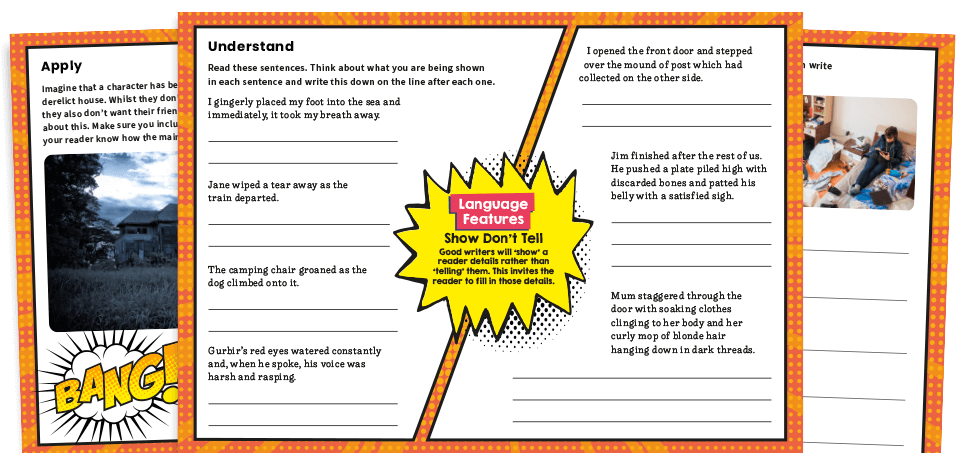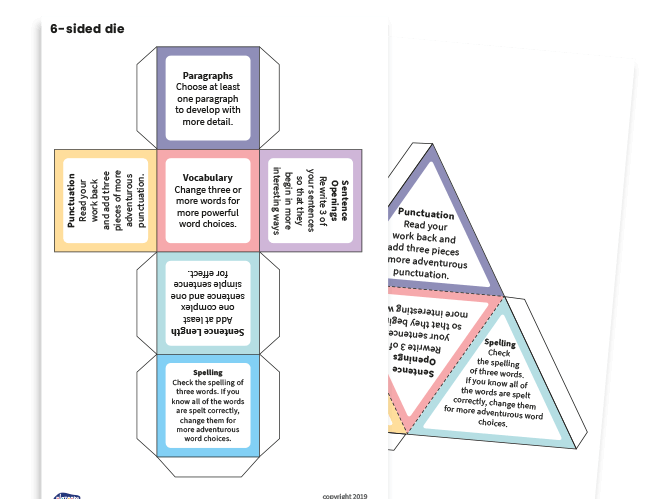Greater depth writing – Teaching ideas for KS2
Learn how to identify pupils ready for greater depth writing and use these practical strategies from teacher Sue Drury to help them exceed age-related expectations...
People are not the same. And that includes pupils. Just as there are those who need extra help to achieve what is expected at their age, there are also those who are capable of a higher standard than what they are showing.
They need to have their capacity for deeper learning recognised not just in their assessments, but also in what is expected of them on a day-to-day basis.
Here are some ideas for ensuring that you are able to identify those pupils and provide challenges that help them to fulfil their potential...
Deep learning in primary school
Historically, there was a tendency to push more able pupils further along the curriculum in order to meet their needs.
More recently, however, the emphasis has shifted towards providing opportunities to delve deeper into the requirements of the age expectations.
This has the benefit of challenging them, without leaving them with nowhere to go and nothing to learn when the rest of the class catches up.
Formative assessment in primary education
So, what does greater depth in English look like? At the end of KS2, that depends on whether you’re talking about reading or writing.
For reading, it’s all about the SATs. But, even then, it’s not the same raw mark every year. The greater depth scaled score will go up or down depending on how easy or difficult that year’s test was in comparison with other years.
For both KS1 and KS2 writing, greater depth depends upon meeting all the criteria of the expected standard plus some extra ones that have been added to stretch those expectations.
Be warned, these assessments could be subject to moderation. Therefore, make sure you can lay your hands on appropriate evidence through greater depth writing examples.
For KS1 reading, you can use optional tests and teacher assessments to gather evidence. For pupils working at greater depth, tailor reading interviews to reflect the greater depth criteria in the Teacher Assessment Framework (TAF).
Teacher Assessment Framework and lesson planning
It's essential that you are familiar with the requirements of greater depth writing. This is not just so that you can assess it accurately, but also so that you can provide opportunities for pupils to demonstrate that they have met those standards. In short, learn your TAFs.
Mastery of vocabulary skill
One of the ways in which KS2 pupils in any year group can show greater depth in their writing is through their vocabulary choices.
In theory, this should reflect their reading. However, you can give them extra help by giving them the chance to appreciate subtle differences between synonyms or near-synonyms.
For example, why not use our powerful verbs synonym ordering resource? As well as providing word cards for them to sort in order of intensity, it includes cloze procedure activities. These help them increase the accuracy of their word selection.

Creative writing tasks for greater depth
In order to guide your more able pupils towards greater depth standard, you need to provide them with the right opportunities to showcase their skills. No doubt, you can think of some suitable challenges yourself but, in case you want a helping hand, we offer a number of interesting ideas for greater depth writing.
Our Write Now collection, at the top of this page, helps pupils develop greater depth writing by encouraging them to experiment with ambitious vocabulary, rich sensory detail and creative ideas.
The prompts provide regular, achievable challenges that inspire children to stretch their skills, think imaginatively and write with confidence beyond the expected standard. Download the first 40 prompts here.

You might also like our KS2 suspense writing pack. After all, there are few better genres than suspense when it comes to considering the audience and writing for a purpose.

Through a series of sessions, this thrilling resource uses model texts to teach the tricks of the trade and builds towards an independent writing activity that could be used to evidence greater depth skills.
We also offer a writing features challenge mat based on the idea of ‘show, not tell’. By encouraging pupils to understand their audience’s need to fill gaps with their imagination, it addresses key aspects of greater depth writing.

Expert writing guidance
What better role model could there be for greater depth writing than a published author? While it would be wonderful to be able to lure these exotic creatures into your school on a regular basis, they do tend to be rather elusive.
That is why we have created our Author In Your Classroom series. We've created resources and recorded podcasts with published children’s authors so that they can share their wisdom and inside knowledge with pupils.
A good place to start would be our pack on how to plan the perfect plot for a mystery story, featuring tips and advice from Robin Stevens, creator of the popular Murder Most Unladylike series.
Understanding the importance of editing
The ability to edit and improve written work is an explicit expectation of greater depth writing at KS1 and, at the very least, strongly implied at KS2.
However, getting pupils to go back over their work methodically and effectively can be a bit of a battle, so why not turn it into a game?
Our make-them-yourself editing dice get children to focus on specific aspects of their writing ‘by chance’, but you can bet that they will eventually cover the full range of checks in due course.

Remember, boosting the performance of your more able pupils is not just about making your school look shiny in the GDS percentages column.
It’s about doing justice to a group of pupils with additional needs of their own. Hopefully, these tips and resources will help you achieve that and give greater depth to your own teaching practice.
Sue Drury qualified as a primary teacher in 1999. Teaching pupils from Year 1 to Year 8, she has held a variety of positions including maths and English subject leader, year leader, and assistant headteacher. Sue has mentored students and NQTs, offering guidance and advice using her years of experience. She created many of Plazoom's literacy resources.